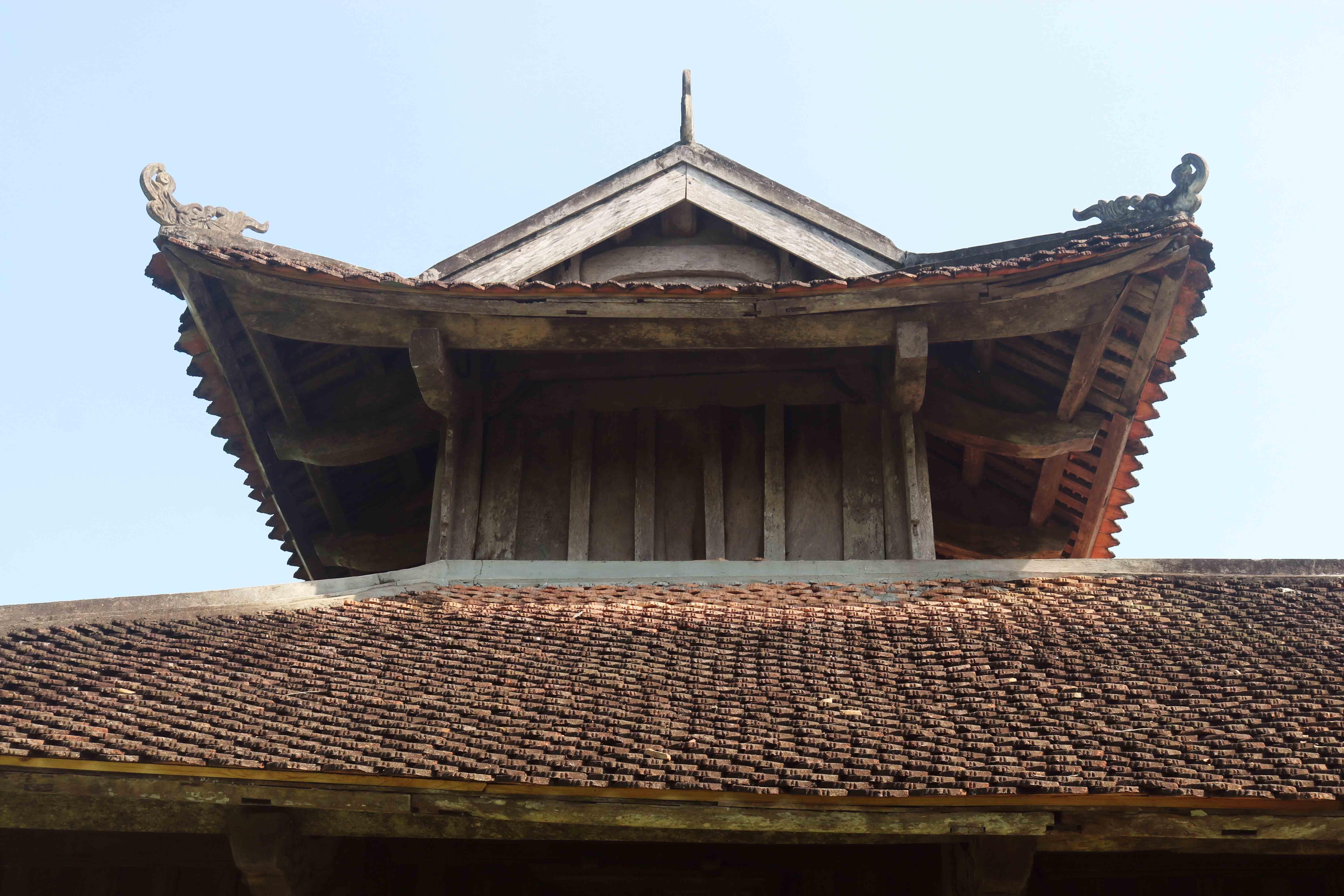The unique ancient communal house associated with the Nghe - Tinh Soviet movement
(Baonghean.vn) - Not only being a famous historical relic associated with the Nghe - Tinh Soviet movement, Vo Liet communal house (Thanh Chuong district) is also a place with unique architecture in Nghe An.
 |
Vo Liet communal house is located in a spacious area on the Re field, in Minh Tan village, Vo Liet commune, a few hundred meters from Phu Ngoai - the place to worship parents of famous general Phan Da. Photo: Huy Thu |
 |
Vo Liet communal house was formerly known as Quan Hang Tong, founded by Vo Liet's Literature Club to worship Confucius and the local sages. The communal house was built in 1859 and completed in 1860. The communal house was designed and built by bachelor Hoang Chinh Truc. Photo: Huy Thu |
 |
Vo Liet communal house was built in the traditional architectural style. There was no sophisticated patterns on the wooden frames, the roof of the communal house is covered with yin and yang tiles. Photo: Huy Thu |
 |
The upper house is a unique building with 8 roofs. Photo: Huy Thu |
 |
The roofs were curved to a certain extent, bringing about a balanced and harmonious beauty. Photo: Huy Thu |
 |
The communal house is built with wooden planks. There are railings to cover, protect and shield the it from rain and sun. A corridor surrounds the communal house. Photo: Huy Thu |
 |
During the process of restoration and embellishment, a stele was built on the right side of the communal house to provide information about the relic. There was also a semicircular lake in front of the communal house... Photo: Huy Thu |
 |
In front of the lower communal house, on both sides of the courtyard, there are two rows of stele houses facing each other, which were originally built of laterite. Each has 3 stelae with the names in Chinese characters of 445 people in Vo Liet who passed exams in the feudal period. Photo: Huy Thu |
 |
Vo Liet communal house is not only a historical and cultural but also revolutionary historical relic with an important position in the relic system of Nghe Tinh land. This place witnessed many typical historical events in the Nghe - Tinh Soviet movement (1930-1931); the place where the forces gathered, where the drums calling for the struggle were beated, the headquarters of the Soviet government of workers and peasants... With great values, Vo Liet communal house was ranked as a national cultural - historical relic in 1988. Photo: Huy Thu |
The unique architecture of Vo Liet communal house. Video: Huy Thu |

